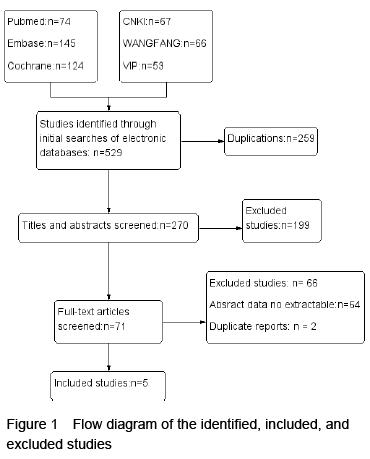| [1] Neogi T. The epidemiology and impact of pain in osteoarthritis. Osteoarthritis and Cartilage. 2013;21(9): 1145-1153.[2] Visser AW, de Mutsert R, Bloem JL, et al. Knee osteoarthritis and fat free mass interact in their impact on health-related quality of life in men: the Netherlands Epidemiology of Obesity study. Arthritis Care Res. 2015.[3] Alkan B M, Fidan F, Tosun A, et al. Quality of life and self-reported disability in patients with knee osteoarthritis. Mod Rheumatol. 2014;24(1):166-171.[4] Torres-Claramunt R, Hinarejos P, Pérez-Prieto D, et al. Sealing of the intramedullar femoral canal in a TKA does not reduce postoperative blood loss: a randomized prospective study. Knee. 2014;21(4):853-857.[5] Keating EM, Meding JB, Faris PM, et al. Predictors of transfusion risk in elective knee surgery. Clin Orthop Relat Res. 1998;(357):50-59.[6] Tsumara N, Yoshiya S, Chin T, et al. A prospective comparison of clamping the drain or post-operative salvage of blood in reducing blood loss after total knee arthroplasty. J Bone Joint Surg Br. 2006;88(1):49-53.[7] Friederichs MG, Mariani EM, Bourne MH. Perioperative blood salvage as an alternative to predonating blood for primary total knee and hip arthroplasty. J Arthrop. 2002;17(3):298-303.[8] Steinberg EL, Ben-Galim P, Yaniv Y, et al. Comparative analysis of the benefits of autotransfusion of blood by a shed blood collector after total knee replacement. Arch Orthop Trauma Surg. 2004;124(2):114-118.[9] Abuzakuk T, Senthil Kumar V, Shenava Y, et al. Autotransfusion drains in total knee replacement. Are they alternatives to homologous transfusion? Int Orthop. 2007;31(2):235-239.[10] Amin A, Watson A, Mangwani J, et al. A prospective randomised controlled trial of autologous retransfusion in total knee replacement. J Bone Joint Surg Br. 2008;90(4):451-454.[11] Strümper D, Weber EWG, Gielen Wijffels S, et al. Clinical efficacy of postoperative autologous transfusion of filtered shed blood in hip and knee arthroplasty. Transfusion. 2004;44(11):1567-1571.[12] So-Osman C, Nelissen RGHH, Eikenboom HCJ, et al. Efficacy, safety and user-friendliness of two devices for postoperative autologous shed red blood cell re-infusion in elective orthopaedic surgery patients: a randomized pilot study. Transfusion Med. 2006;16(5): 321-328.[13] Markar SR, Jones GG, Karthikesalingam A, et al. Transfusion drains versus suction drains in total knee replacement: meta-analysis. Knee Surg Sports Traumatol Arthroscopy. 2012;20(9):1766-1772.[14] Quinn M, Bowe A, Galvin R, et al. The use of postoperative suction drainage in total knee arthroplasty: a systematic review. Int Orthop. 2015;39(4):653-658.[15] Haien Z, Yong J, Baoan M, et al. Post-operative auto-transfusion in total hip or knee arthroplasty: a meta-analysis of randomized controlled trials. PLoS One. 2013;8(1):e55073.[16] Bafeta A, Trinquart L, Seror R, et al. Reporting of results from network meta-analyses: methodological systematic review. BMJ. 2014;348:g1741.[17] Hutton B, Salanti G, Chaimani A, Caldwell DM, et al. The quality of reporting methods and results in network meta-analyses: an overview of reviews and suggestions for improvement. PLoS One. 2014;9(3):e92508.[18] Cipriani A, Higgins JP, Geddes JR, et al. Conceptual and technical challenges in network meta-analysis. Ann Intern Med. 2013;159(2):130-137.[19] Liberati A, Altman DG, Tetzlaff J, et al. The PRISMA statement for reporting systematic reviews and meta- analyses of studies that evaluate healthcare interventions: explanation and elaboration. BMJ. 2009; 339:b2700.[20] Phillips B, Ball C, Sackett D, et al. Levels of evidence and grades of recommendation. Oxford Centre for Evidence-based Medicine. 2015.[21] J H, S G. Cochrane Handbook for Systematic Reviews of Interventions. New York, NY: Cochrane Collaboration, John Wiley and Sons. 2008.[22] Thomassen BJ, den Hollander PH, Kaptijn HH, ety al. Autologous wound drains have no effect on allogeneic blood transfusions in primary total hip and knee replacement: a three-arm randomised trial. Bone Joint J. 2014;96-B(6):765-771.[23] Horstmann W, Kuipers B, Ohanis D, et al. Autologous re-transfusion drain compared with no drain in total knee arthroplasty: a randomised controlled trial. Blood Transfus. 2014;12 Suppl 1:S176-S181.[24] Dutton T, De-Souza R, Parsons N, et al. The timing of tourniquet release and ‘retransfusion’ drains in total knee arthroplasty: a stratified randomised pilot investigation. Knee. 2012;19(3):190-192.[25] Adalberth G, Bystrom S, Kolstad K, et al. Postoperative drainage of knee arthroplasty is not necessary: a randomized study of 90 patients. Acta Orthop Scand. 1998;69(5):475-478.[26] Ritter MA, Keating EM, Faris PM. Closed wound drainage in total hip or total knee replacement. A prospective, randomized study. J Bone Joint Surg Am. 1994;76(1):35-38.[27] Esler CNA, Blakeway C, Fiddian NJ. The use of a closed-suction drain in total knee arthroplasty. J Bone Joint Surg. 2003;85(2):215-217.[28] Holt BT, Parks NL, Engh GA, Lawrence JM. Comparison of closed-suction drainage and no drainage after primary total knee arthroplasty. Orthopedics. 1997;20(12):1121-1124, 1124-1125.[29] Muñoz M, Ariza D, Garcerán MJ, et al. Benefits of postoperative shed blood reinfusion in patients undergoing unilateral total knee replacement. Arch Orthop Trauma Surg. 2005;125(6):385-389.[30] Carless P, Moxey AO, Connell D, et al. Autologous transfusion techniques: a systematic review of their efficacy. Transfusion Med. 2004;14(2):123-144.[31] Thomas D, Wareham K, Cohen D, et al. Autologous blood transfusion in total knee replacement surgery. Br J Anaesth. 2001;86(5):669-673.[32] Hansen E, Hansen MP. Reasons against the retransfusion of unwashed wound blood. Transfusion. 2004;44(12 Suppl):45S-53S.[33] Kim YH, Cho SH, Kim RS. Drainage versus nondrainage in simultaneous bilateral total knee arthroplasties. Clin Orthop Relat Res. 1998, (347):188-193.[34] Saleh K, Olson M, Resig S, et al. Predictors of wound infection in hip and knee joint replacement: results from a 20 year surveillance program. J Orthop Res. 2002;20(3): 506-515.[35] Zamora-Navas P, Collado-Torres F, de la Torre-Solis F. Closed suction drainage after knee arthroplasty. A prospective study of the effectiveness of the operation and of bacterial contamination. Acta Orthop Belg. 1999; 65(1):44-47.[36] Greidanus NV, Peterson RC, Masri BA, et al. Quality of Life Outcomes in Revision Versus Primary Total Knee Arthroplasty. J Arthrop. 2011;26(4):615-620. |
.jpg)


.jpg)
.jpg)
.jpg)



